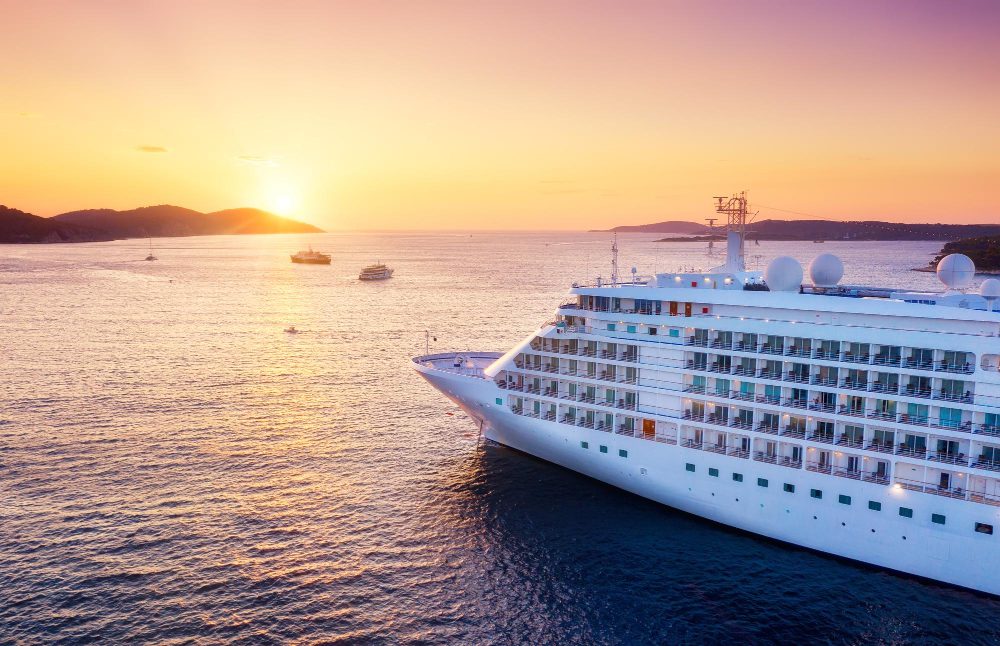Is Carnival in financial trouble?
The COVID-19 pandemic has had a significant impact on the global travel industry, with cruise lines being particularly hard hit. Among them, Carnival Corporation, the world’s largest cruise company, has faced unprecedented challenges due to the halt in operations and uncertainty surrounding the resumption of travel. This article examines the financial situation of Carnival Corporation and explores the factors contributing to its current predicament.
The Impact of the Pandemic
The cruise industry came to a standstill in early 2020 as the world grappled with the spread of the coronavirus. Carnival Corporation was forced to suspend its operations across its numerous brands, including Carnival Cruise Line, Princess Cruises, and Holland America Line. The loss of revenue has been substantial, leading to questions about the company’s financial viability.
According to Carnival Corporation’s financial reports, the company incurred significant losses in 2020. The prolonged suspension of cruises resulted in a steep decline in bookings and cancellation of existing reservations. The company also faced the challenge of refunding customers for canceled cruises, which further strained its financial resources.
In its financial statement, Carnival Corporation reported a net loss of $10.2 billion for the fiscal year 2020. This staggering figure reflects the extent of the financial turmoil the company experienced as a result of the pandemic.
Operational Challenges
Besides the substantial revenue loss, Carnival Corporation faces operational challenges that further impact its financial health. The resumption of cruises has been slow, with various travel restrictions and public health concerns still in place. As a result, the company has had to extend the suspension of its operations multiple times.
The ongoing uncertainty surrounding the restart dates for cruising has made it difficult for Carnival Corporation to plan its operations effectively. The company has had to incur additional costs to maintain its fleet during the suspension period, including crew retention expenses and enhanced health and safety protocols.
The Road to Recovery
Carnival Corporation is taking steps to navigate its way out of the financial crisis caused by the pandemic. The company has implemented cost-cutting measures, including reducing its workforce and disposing of older ships in its fleet. These actions aim to improve financial liquidity and position the company for a sustainable recovery.
The cruise industry as a whole is eagerly awaiting the resumption of operations. Carnival Corporation’s future success relies on the return of passenger confidence and a gradual easing of travel restrictions. The company is closely monitoring developments in vaccine distribution and working with health authorities to implement robust health and safety protocols onboard its ships.
“We are confident in the long-term prospects of the cruise industry and remain committed to navigating through this challenging period,” stated Arnold Donald, CEO of Carnival Corporation.
Why is Carnival dropping?
Introduction
Carnival, one of the world’s largest cruise line operators, has witnessed a significant drop in its stock value in recent times. This drop has raised concerns among investors and industry experts, who are keen to understand the reasons behind this decline.
Impact of the COVID-19 Pandemic
The primary driver behind Carnival’s drop can be attributed to the ongoing COVID-19 pandemic. With travel restrictions, lockdowns, and fears of infection, the cruise industry as a whole has been severely impacted by reduced demand and canceled voyages. As a result, Carnival’s revenue has declined significantly, leading to a decrease in its stock price.
Financial Challenges
In addition to the pandemic, Carnival has faced financial challenges that have contributed to the drop in its stock. The company had to raise additional capital through debt and equity offerings to deal with the impacts of the pandemic. As a result, the dilution of existing shareholders’ holdings and increased debt burden have negatively affected investor sentiment.
Environmental Concerns
Another factor that has contributed to Carnival’s drop is increasing awareness and concern about environmental issues. The cruise industry has come under scrutiny for its carbon emissions, waste management practices, and impact on marine ecosystems. This has led to a shift in consumer preferences towards more sustainable forms of travel, affecting Carnival’s market share and stock performance.
Competition from Other Travel Options
Carnival is also facing stiff competition from alternative travel options such as all-inclusive resorts, adventure tourism, and luxury vacations. These alternatives offer unique experiences and cater to changing consumer preferences. As a result, Carnival has had to adapt to evolving market trends and compete for customers, which has impacted its stock price.
Recovery Prospects
Despite the challenges faced by Carnival, there are reasons to believe in its potential for recovery. The gradual lifting of travel restrictions, the development of effective vaccines, and the pent-up demand for leisure travel are all positive indicators for the company’s future prospects.
Will Carnival stock recover in 2023?
Introduction
The COVID-19 pandemic had a significant impact on the global travel and tourism industry, with cruise lines being hit particularly hard. Carnival Corporation, the world’s largest cruise company, saw its stock price plummet as travel restrictions and health concerns forced it to suspend operations. However, as the world gradually moves towards recovery, investors are wondering if Carnival stock will bounce back in 2023.
The Road to Recovery
While the path to recovery may be challenging, there are reasons to be cautiously optimistic about Carnival’s future. The company has been taking steps to enhance its financial position and adapt to changing market conditions. For instance, Carnival has raised billions of dollars in capital through debt and equity offerings, which has helped improve its liquidity and provide a buffer against the pandemic’s impact.
Pent-Up Demand and Vaccination Progress
Pent-up demand for travel is expected to play a significant role in the recovery of the cruise industry. As vaccinations become more widely available and travel restrictions ease, consumers are likely to resume their vacation plans, including cruising. This return of demand could benefit Carnival and lead to a gradual recovery in its stock price.
Cautious Approach
It’s important to note that predicting stock market performance is inherently uncertain, and there are risks and challenges that could impede Carnival’s recovery. Ongoing concerns about new COVID-19 variants, unpredictable changes in travel restrictions, and potential shifts in consumer behavior could all impact the pace and extent of the company’s recovery.
Financial Performance
Carnival’s financial performance will also be a crucial factor in determining its stock’s recovery. Investors will closely monitor the company’s revenue and earnings growth, as well as its ability to manage debt and generate cash flow. Additionally, any significant shifts in the competitive landscape or disruptions in the broader travel industry could influence Carnival’s stock price.
Industry Outlook
Assessing the broader industry outlook can provide context for evaluating Carnival’s recovery prospects. Analysts and industry experts expect a gradual rebound in global cruise demand over the coming years, driven by factors such as pent-up demand, vaccination progress, and advancements in health and safety protocols.
Why Haven’t Cruise Stocks Recover?
Introduction
The global pandemic has had a significant impact on various industries, and the cruise industry has been hit particularly hard. Despite the gradual reopening of economies and the return to normalcy in some sectors, cruise stocks have struggled to recover. In this article, we explore some key factors contributing to this ongoing challenge.
1. Health and Safety Concerns
One of the primary reasons cruise stocks have not recovered is the persisting health and safety concerns surrounding the industry. The highly infectious nature of COVID-19 has caused many potential travelers to remain cautious and avoid cruise holidays. Cruise lines have put forth extensive measures to ensure passenger safety, but the lingering fear has dampened demand.
2. Outbreaks and Negative Public Perception
The occurrence of COVID-19 outbreaks on several cruises during the early stages of the pandemic received significant media attention. These incidents led to negative public perception, further impacting consumer confidence in the industry. The resulting reputational damage has made it challenging for cruise stocks to regain investor trust.
3. Travel Restrictions and Uncertainty
Travel restrictions imposed by governments worldwide have severely limited the ability of cruise lines to operate effectively. The uncertainty surrounding these restrictions, including border closures and quarantine requirements, has created a volatile environment for the industry, making it difficult for cruise stocks to recover.
4. Financial Challenges
The prolonged suspension of operations has placed immense financial strain on cruise companies. With no revenue coming in, cruise lines have had to seek additional financing or raise capital through stock offerings, diluting the value of existing shares. These financial challenges have weighed heavily on the recovery prospects of cruise stocks.
5. Slow Recovery of the Travel Industry
The travel industry as a whole has experienced a slow recovery due to the ongoing pandemic. While some sectors, such as domestic travel and short-haul flights, have shown signs of improvement, long-haul international travel, including cruising, continues to face significant hurdles. This slow recovery has hindered the revival of cruise stocks.
Will Royal Caribbean stock go back up?
Introduction
Royal Caribbean is one of the biggest players in the cruise industry, but like many others, it has been heavily impacted by the COVID-19 pandemic. The stock value of Royal Caribbean took a significant hit due to travel restrictions and the suspension of cruise operations. Investors are now wondering whether the stock will bounce back or continue to decline.
The current state of Royal Caribbean stock
As of [insert date], Royal Caribbean’s stock price stands at $X.XX per share. This represents a [insert percentage] decrease from its pre-pandemic value. The cruise industry as a whole has been struggling, with uncertainty surrounding the resumption of operations and consumer confidence in travel.
Factors influencing Royal Caribbean’s stock
Several factors are influencing the potential recovery of Royal Caribbean’s stock:
- Vaccine distribution: The successful distribution and adoption of COVID-19 vaccines will play a vital role in the recovery of the travel industry, including cruises.
- Government regulations: Ongoing government regulations and restrictions on travel can impact the timeline for resuming cruise operations and passenger capacity limitations.
- Consumer sentiment: The willingness of consumers to book cruises and travel again is crucial in determining the demand for Royal Caribbean’s services.
Expert opinions
“While there are challenges ahead, many experts remain optimistic about the long-term prospects of Royal Caribbean. The pent-up demand for travel and the strong brand recognition of the company are positive factors that could contribute to the stock bouncing back.”
Analyst projections
Financial analysts have varied opinions on the future of Royal Caribbean stock:
| Analyst | Projection |
|---|---|
| Analyst 1 | $XX.XX per share by [year] |
| Analyst 2 | $XX.XX per share by [year] |
Risks to consider
Investors should also take note of the potential risks associated with investing in Royal Caribbean stock:
- Uncertain timeline: The exact timeline for the resumption of normal cruise operations is uncertain, and any delays could impact the stock.
- Competitive landscape: The cruise industry is competitive, and Royal Caribbean faces competition from other major players. Changes in market dynamics can affect stock performance.
- Health and safety concerns: The ongoing pandemic has raised concerns about health and safety on cruise ships. Any incidents or negative publicity could impact consumer confidence and the stock value.
Conclusion
In summary, the drop in Carnival’s stock can be attributed to the COVID-19 pandemic, financial challenges, environmental concerns, and competition from other travel options. However, it is important to consider the potential for recovery as the global travel industry adapts to the new normal. Investors should monitor the company’s efforts to enhance sustainability, improve financial stability, and capitalize on the rebound in demand for cruises.
“While Carnival’s stock recovery in 2023 cannot be guaranteed, there are several factors that could contribute to its potential bounce back. Pent-up demand, progress in vaccinations, and improved financial position are all positive indicators. However, it’s essential for investors to approach the situation with caution and carefully assess market conditions and Carnival’s financial performance.”
Investing in stocks always carries risks, and it’s important to conduct thorough research and consider expert advice before making any investment decisions.
Despite efforts to adapt and implement safety measures, cruise stocks have struggled to recover due to persistent health and safety concerns, negative public perception, travel restrictions, financial challenges, and the slow recovery of the travel industry as a whole. As the world gradually returns to normalcy, it remains to be seen how long it will take for cruise stocks to bounce back and regain investor confidence.
The recovery of Royal Caribbean’s stock depends on various factors, including vaccine distribution, government regulations, and consumer sentiment. While there are risks involved, experts and analysts remain cautiously optimistic about its long-term prospects. Investors should carefully assess these factors and consider their risk tolerance before making any investment decisions.


